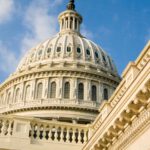With its transaction growth rates slowing and less than expected revenue guidance for the balance of the year, PayPal focused on its repositioning from peer-to-peer pioneer to two-sided payments technology platform in its Q3 earnings call Tuesday (Oct. 29).
Notably absent from the call was any substantial discussion of the financial health of consumers that will drive revenue at the company’s core business, outside of CFO Jamie Miller’s comment that the consumer was “strong.”
The focus instead was on new checkout and payments initiatives despite strong results for its core P2P brand and Venmo. The company’s buy now, pay later (BNPL) solution was up 20%, according to CEO Alex Chriss, who added that the BNPL capability is live on only 5% of the company’s U.S. checkout traffic and that PayPal was “pushing hard to get them into the hands of more of our merchants” in Q4 and into next year.
“We’re having very constructive conversations with our merchants focused on ways we can enable strategic growth opportunities that drive long term upside for both of us,” Chriss told the earnings call audience.
“What is different today is that we now have a suite of value-added services including payouts, risk as a service, orchestration, guest checkout and personalization capabilities that help attract new customers and convert them more effectively.”
By the Numbers
PayPal reported a 9% year-over-year increase in total transaction volume for Q3, reaching $422.6 billion, largely due to growth in Venmo and PayPal digital payments. Venmo alone saw a 15% transaction volume increase, while the “PayPal Everywhere” initiative and expanded debit card offerings boosted customer engagement and transaction frequency.
PayPal Everywhere — boosted by a high-profile Will Ferrell TV commercial — is an enhanced rewards program that allows consumers to receive 5% cash back on a spending category of their choice. Chriss said the company has added 1 million debit cards since its early September launch. Shoppers can receive up to $1,000 in cash back in their selected category, which Chriss said was trending toward groceries, gasoline and restaurants.
That finding is consistent with PYMNTS Intelligence recent work on cash and debit card usage. In the “How People Pay” report “Debit Dominates In-Store Shopping While Credit Owns Online” it found that shoppers rely on debit cards more than any other payment method, even credit, for everyday expenses.
Likewise, consumers continue to prefer shopping for everyday items in-person. For example, 88% of consumers like to shop for groceries themselves. In July, consumers used debit for 41% of in-store grocery transactions. Similarly, consumers used debit for 33% of in-person restaurant dining.
For PayPal, debit card volume surged 13% compared to the prior year. Looking ahead, PayPal anticipates Q4 revenue growth between 8% to 10%, maintaining focus on scaling profitability and bolstering customer acquisition through strategic investments.
Those results were on the positive side of the growth ledger, but not enough to please Wall Street, which took the stock down during the day on what many analysts said were transaction volume growth rates that were below expectations.
Both Chriss and Miller commented at several times during the call that they expected more growth to come from strategic investments in payments processor Braintree as well as more revenue from its Fastlane online checkout technology. Chriss also mentioned recent deals with Fiserv, Adyen and Shopify on the payments side and Amazon Buy with Prime on the merchant side.
“I feel very good about the durable growth there,” Chriss said. “Maybe something we haven’t connected the dots on well enough is all of the innovation that we’re doing with Fastlane and with PayPal Everywhere. It all comes back to that durable branded checkout growth. With PayPal Everywhere, we’re starting to see real habituation of people not just getting access to the offline checkout, but also now bringing that back into online.”





